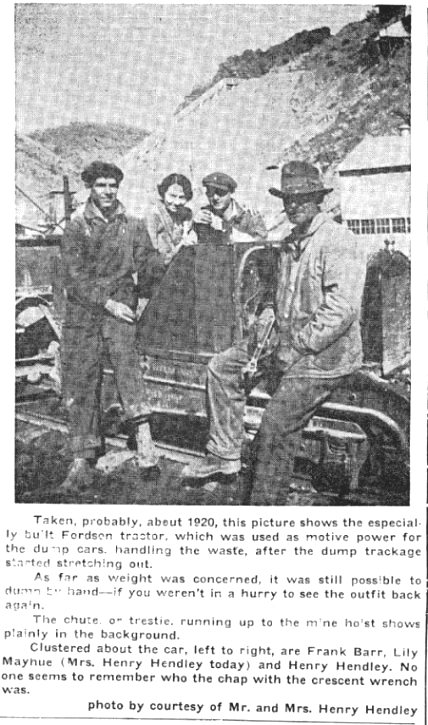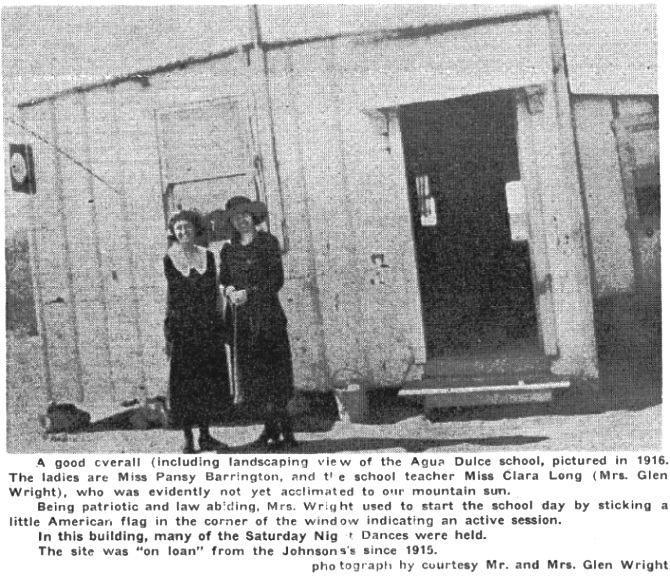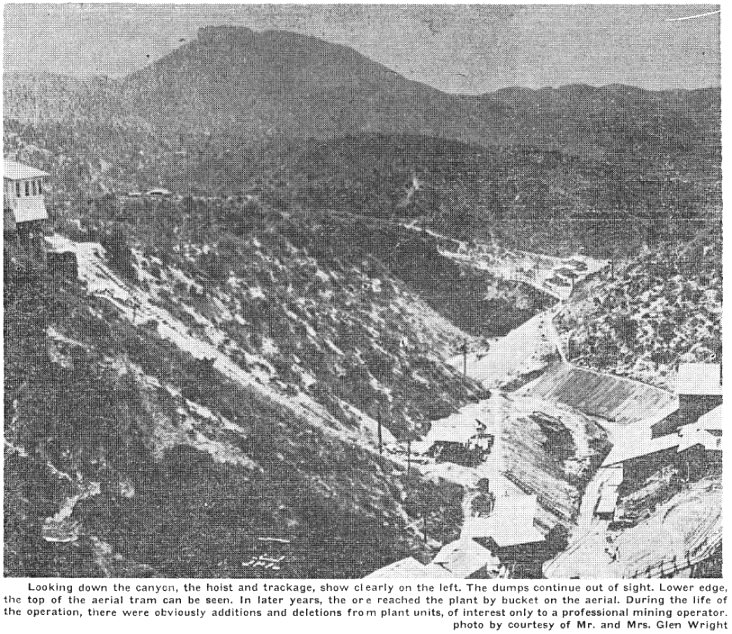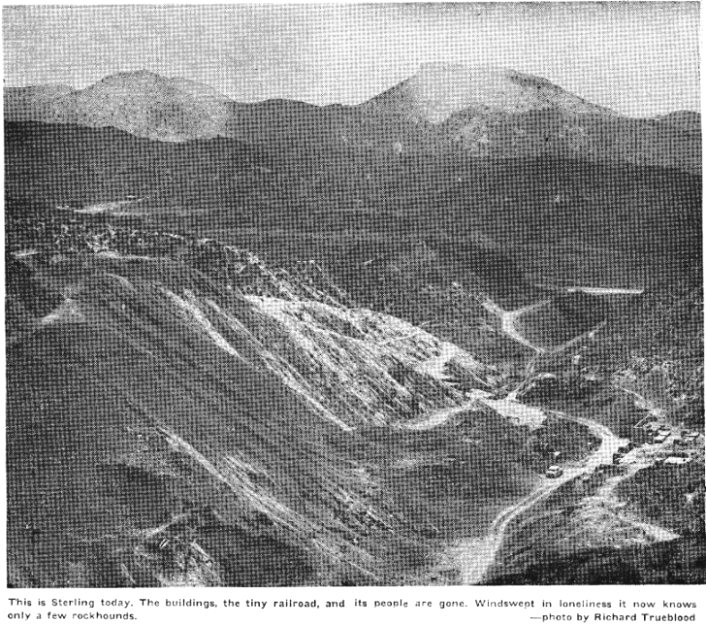
Borax furnished quite a few Newhall husbands. Walter Murphy married Minnie Mitchell. The Mitchells had displaced the Indians in the Soledad in 1860. Henry Hendley married Lillie Mayhue. Mayhues came to Newhall in 1893. Miss Clara Long came up from the big city to teach at the Agua Dulce school. She’s still up in Mint Canyon.

Now you might have just been thinking that Sterling was a lost place to live in. Goodness, No! There was never a Saturday night without its dance. (Counting recovery and convalescence, it was good for two days out of seven.) Who stayed home? Nobody.
Babies were taken along as a matter of course and stacked where convenient.
The gals manufactured a swarm of sandwiches, a plethora of cakes – and what cakes? – and gallons of coffee.
Musicians quit at midnight – and some eager beaver would start passing the hat around to stimulate him, her or it – a fiddle was sometimes all, and maybe a piano if you felt snooty.
By about sun up, spirits flagged noticeably, the collection was running increasingly anemic till overtaken with disaster and failure, the musicians wondering audibly if the cash customers didn’t have any homes. The hardy customers still left leaked out. The new day began, a little late.

And where did the folks all come from? Sterling and Soledad and Acton and Mint Canyon. Maybe a few from Newhall, if they’d been asked.
And where were the dances held? They probably started in the Sterling Commissary. They also were held in the school houses of Agua Dulce, Mint, and Soledad, up at Acton.
Promoting the dances was really sort of extra-curricular job for the school teachers.
Would you like to know what the grandparents danced in those golden years?

The Bunny Hug, Turkey Trot, and similar, weren’t considered quite respectable in some places. And the way some of the grandparents danced them, maybe they weren’t.
Embarrassing things did happen. Take the time Bert McCormick was entertaining a niece. Bert was electrician at the mine then. Came Saturday and the dance was scheduled for Acton. Bert suggested Hendley drive over with them.
About 10:30, Bert came around and suggested going home. At 11:00 Bert came round again and mentioned that they were leaving. Hendley and niece were having a wonderful dance. Maybe the idea didn’t penetrate, but darn it, Bert did finally leave.
The couple were down at Acton station when the 5: a.m. train came through. They got to Lang and waited two hours for the dinky which finally arrived and they got home at noon.
Ben Truax still speaks nostalgically of the party in 1916, when Sterling folks went down to Saugus by train, were met by a concord stage and taken to the Gage ranch, had a swell day, and caught the night train back to Lang.


That was where we sat down for a few minutes rest. It was a warm. We were hot. How it happened, I’m not quite sure but, suddenly, I’m darned if I didn’t hear a locomotive whistle coming up the canyon grade from the barely visible flat in the distance.
It wasn’t making rapid headway, but it kept on coming and finally stopped at the plant loading platform and some fellows started taking something off a flat car. There was a tank car, just slightly splashing.
Then the little locomotive picked up steam again and started up the switch back to the hoist. They stopped at a sheet iron shed, unloaded some 10x10 timbers, and there were weird noises of a cut-off, and framing saws shrieking, and handling of timber sets destined underground.
In the far distance, at cabins, in the flat, there were some ladies visible, and children playing – but you couldn’t hear them.
In fact, there didn’t seem to be anything to be heard or seen – except a couple of rock hounds puttering with their little picks – and then I came to – that little dream must have been a reflection of long ago – and that must be why they call Sterling a Ghost Camp.